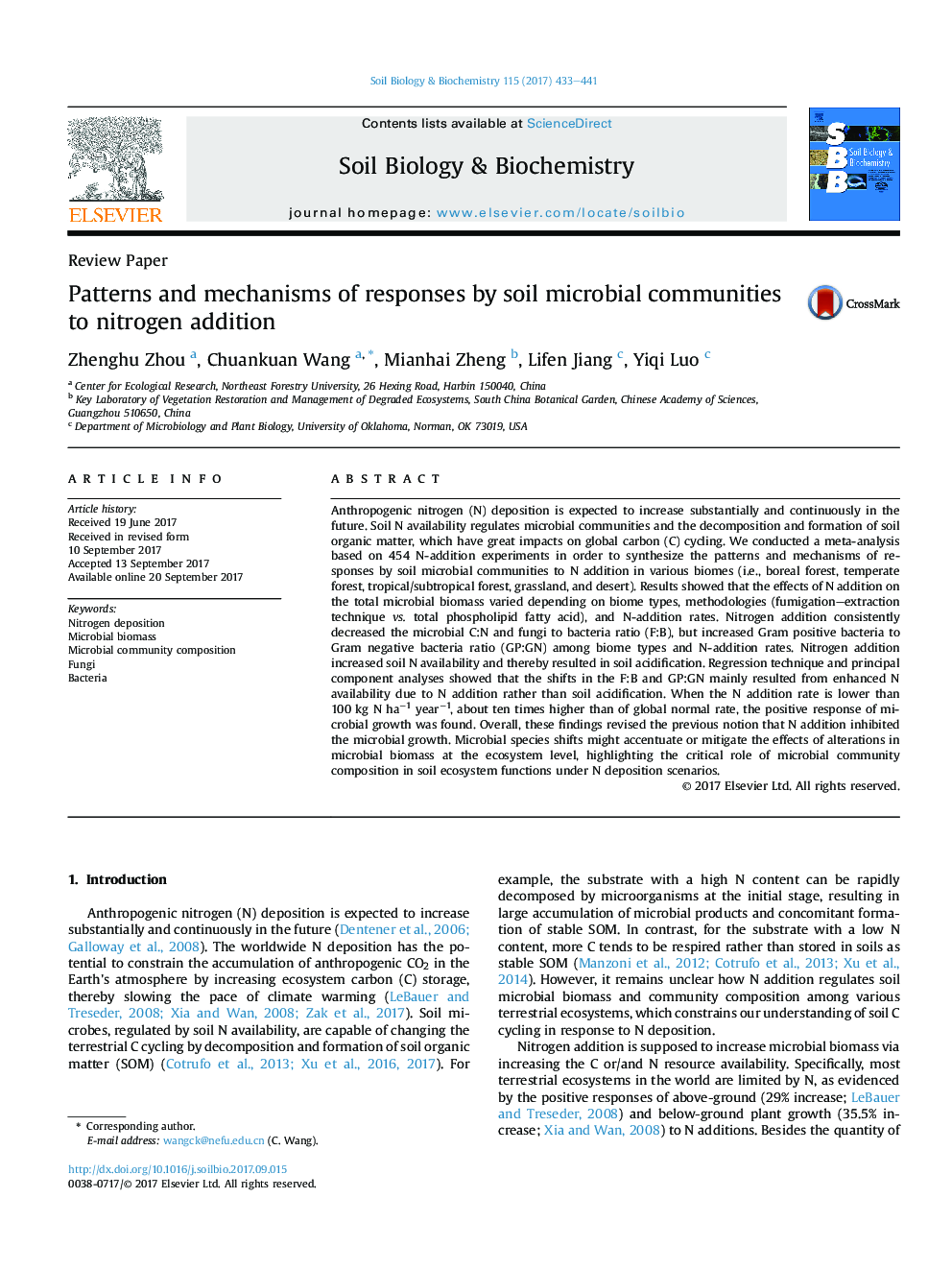| Article ID | Journal | Published Year | Pages | File Type |
|---|---|---|---|---|
| 5516264 | Soil Biology and Biochemistry | 2017 | 9 Pages |
â¢A meta-analysis based on 454 N addition experiments.â¢Current normal rates of N deposition may not inhibit microbial growth.â¢N addition decreased fungi to bacteria ratio.â¢N addition increased Gram positive bacteria to Gram negative bacteria ratio.â¢N addition affects microbes through resources enhancement rather than acidification.
Anthropogenic nitrogen (N) deposition is expected to increase substantially and continuously in the future. Soil N availability regulates microbial communities and the decomposition and formation of soil organic matter, which have great impacts on global carbon (C) cycling. We conducted a meta-analysis based on 454 N-addition experiments in order to synthesize the patterns and mechanisms of responses by soil microbial communities to N addition in various biomes (i.e., boreal forest, temperate forest, tropical/subtropical forest, grassland, and desert). Results showed that the effects of N addition on the total microbial biomass varied depending on biome types, methodologies (fumigation-extraction technique vs. total phospholipid fatty acid), and N-addition rates. Nitrogen addition consistently decreased the microbial C:N and fungi to bacteria ratio (F:B), but increased Gram positive bacteria to Gram negative bacteria ratio (GP:GN) among biome types and N-addition rates. Nitrogen addition increased soil N availability and thereby resulted in soil acidification. Regression technique and principal component analyses showed that the shifts in the F:B and GP:GN mainly resulted from enhanced N availability due to N addition rather than soil acidification. When the N addition rate is lower than 100 kg N haâ1 yearâ1, about ten times higher than of global normal rate, the positive response of microbial growth was found. Overall, these findings revised the previous notion that N addition inhibited the microbial growth. Microbial species shifts might accentuate or mitigate the effects of alterations in microbial biomass at the ecosystem level, highlighting the critical role of microbial community composition in soil ecosystem functions under N deposition scenarios.
